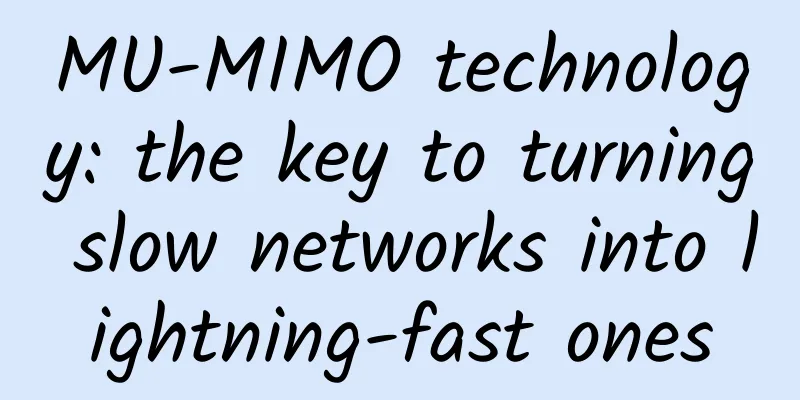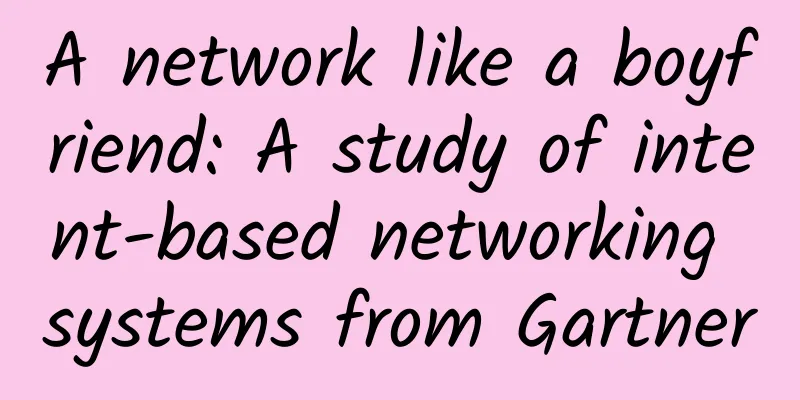MU-MIMO technology: the key to turning slow networks into lightning-fast ones

|
In recent years, with the rapid development of wireless technology and smart home, wireless surveillance cameras, network TVs, home projectors and other home networking devices have been added to the home wireless network. However, the more connected devices there are, the slower the network speed is. This is because most routers in the past could only transmit data to one device at a time, which means that the devices had to queue up in turn and wait for data transmission. But now, this problem has been greatly improved, and it is the MU-MIMO (Multi-User Multiple Input Multiple Output) technology that has changed all this. The emergence of MU-MIMO technology allows routers to communicate with multiple devices at the same time, truly improving the utilization of network resources. Increasing the RF chain used for transmission can greatly improve the downlink performance. Adding more transmission devices can strengthen signal guidance control and achieve higher data rates while reducing interference. How does MU-MIMO work? We already know that the main purpose of MU-MIMO is to improve the efficiency of Wi-Fi networks, but how does it do that? To make it easier to understand, you can imagine the traditional 802.11ac router signal as a "circle". This circle is the coverage of the signal, and the antenna is at the center of the circle and transmits the signal 360 degrees outward. The router will communicate with the devices in the "circle" one by one at a time, and no more than one device can communicate. MU-MIMO (Multi-User Multiple Input Multiple Output) is a common multi-antenna technology, including uplink MU-MIMO and downlink MU-MIMO. Different users use the same time-frequency resources for uplink transmission (single-antenna transmission). From the receiving end, these data streams can be regarded as coming from different antennas of a user terminal, thus forming a virtual MIMO system, namely uplink MU-MIMO. Downlink MU-MIMO can separate the data streams transmitted to different users by eliminating/nulling the data streams at the receiving end. In addition, downlink MU-MIMO can also separate the data streams of different users in advance by using beamforming at the transmitting end, thereby simplifying the operation at the receiving end. What are the advantages of MU-MIMO technology? We have already explained at the beginning that MU-MIMO technology (Multi-User Multiple Input Multiple Output) allows the router to transmit data to multiple devices at the same time, greatly improving the network speed by shortening the time each device waits for the signal. According to relevant data, each household has an average of 8 sets of devices competing for bandwidth at the same time. MU-MIMO technology will greatly improve the wireless network experience at home. For users of home wireless networks, constant buffering, lags and other annoying issues prevent us from enjoying the network to the fullest. Therefore, the performance improvement based on MU-MIMO technology will benefit wireless network users. Below, we will look at several examples of MU-MIMO technology on wireless networks. Since the time all connected devices have to wait to get data from the wireless router is shortened, the operating speed of both MU-MIMO devices and non-MU-MIMO devices (SU-MIMO devices) is improved. In addition, MU-MIMO technology can increase the capacity and efficiency of the router, allowing the router to handle more network activities, such as high-definition streaming video, online games, etc., for a better home entertainment experience. Are MU-MIMO routers compatible? In fact, all wireless devices are compatible with MU-MIMO routers. Of course, if you want to get the best Wi-Fi performance improvement, the device must support MU-MIMO technology, and the number of devices supporting MU-MIMO technology is gradually increasing. This can be seen from the CES exhibition in the United States and the Computex exhibition in Taiwan. More desktop computer, laptop, smartphone and tablet computer manufacturers will increasingly support MU-MIMO technology in the future. According to DigitalTrends.com, MU-MIMO technology is expected to become standard for most devices this year. Future Prospects of MU-MIMO Technology As Wi-Fi usage continues to increase, it is obvious that only by turning to MU-MIMO technology can we better adapt to the increasingly large data transmission. It can be seen that the future prospects of MU-MIMO technology are very promising. With the launch of MU-MIMO wireless chips by chip manufacturers such as Qualcomm and the launch of MU-MIMO devices by more and more router manufacturers, a complete MU-MIMO system will be created.
|
<<: Does your phone support 5G wifi? Is 5G Internet access really fast?
>>: China's 4G speed compared to the United States: the gap is amazing
Recommend
How far will eSIM cards go in 2018?
The eSIM card was mentioned as early as 2011. The...
PacificRack removed old packages and unilaterally raised renewal prices, offering 50% discount on new packages for the first month
I haven't shared information about PacificRac...
Review of the five major mergers and acquisitions in the optical communications industry in 2018: vertical integration is the general trend
Looking back at the whole year of 2018, the optic...
Survey: Germany more dependent on Huawei 5G equipment than before
Germany is even more reliant on Huawei for its 5G...
U.S. tech firms push new software to disrupt my country's 5G lead
Top U.S. technology companies are pushing a softw...
5G development requires a long process
In terms of network construction scale, the numbe...
The Basics: What are edge devices?
Edge devices are more than just hardware, and wit...
The secrets of Netty network programming, just read this one
Netty version: 4.1.55.Final Traditional IO model ...
Common social engineering methods for cracking WPA2 passwords and preventive measures
1. Introduction What is social engineering? Socia...
[Black Friday] HawkHost: 35% off on virtual hosts, 30% off on reseller hosts/cloud servers, data centers in Hong Kong/Los Angeles, etc.
HawkHost basically shares the discount once a yea...
Can 5G drive innovation in the smart home market?
[[348075]] We still have a long way to go before ...
Digital-vm is 40% off, VPS in multiple data centers in the United States, Japan, Singapore, etc., starting from $2.4 per month, 1-10Gbps bandwidth optional
Digital-vm has just released the latest 40% disco...
Results announced! Ruishu Information won the grand prize of "2021 Cybersecurity Outstanding Innovation Achievement Competition"
After the Nanjing Station in August and the Beiji...
VMISS Hong Kong VPS 30% off annual payment from 75 yuan, 20% off for all Korea/Japan/Hong Kong CN2/Los Angeles CN2 GIA/9929/CMIN2 optional
VMISS is offering special discounts during the Ch...
Application of Passive WDM Technology in 5G Fronthaul
Labs Guide Passive WDM technology is the main tec...









